Pork Hamonado with pork belly braised in pineapple juice and soy sauce for the ultimate pork dish. Melt-in-your-mouth tender with a sweet and savory sauce, it's pure heaven on steamed rice!
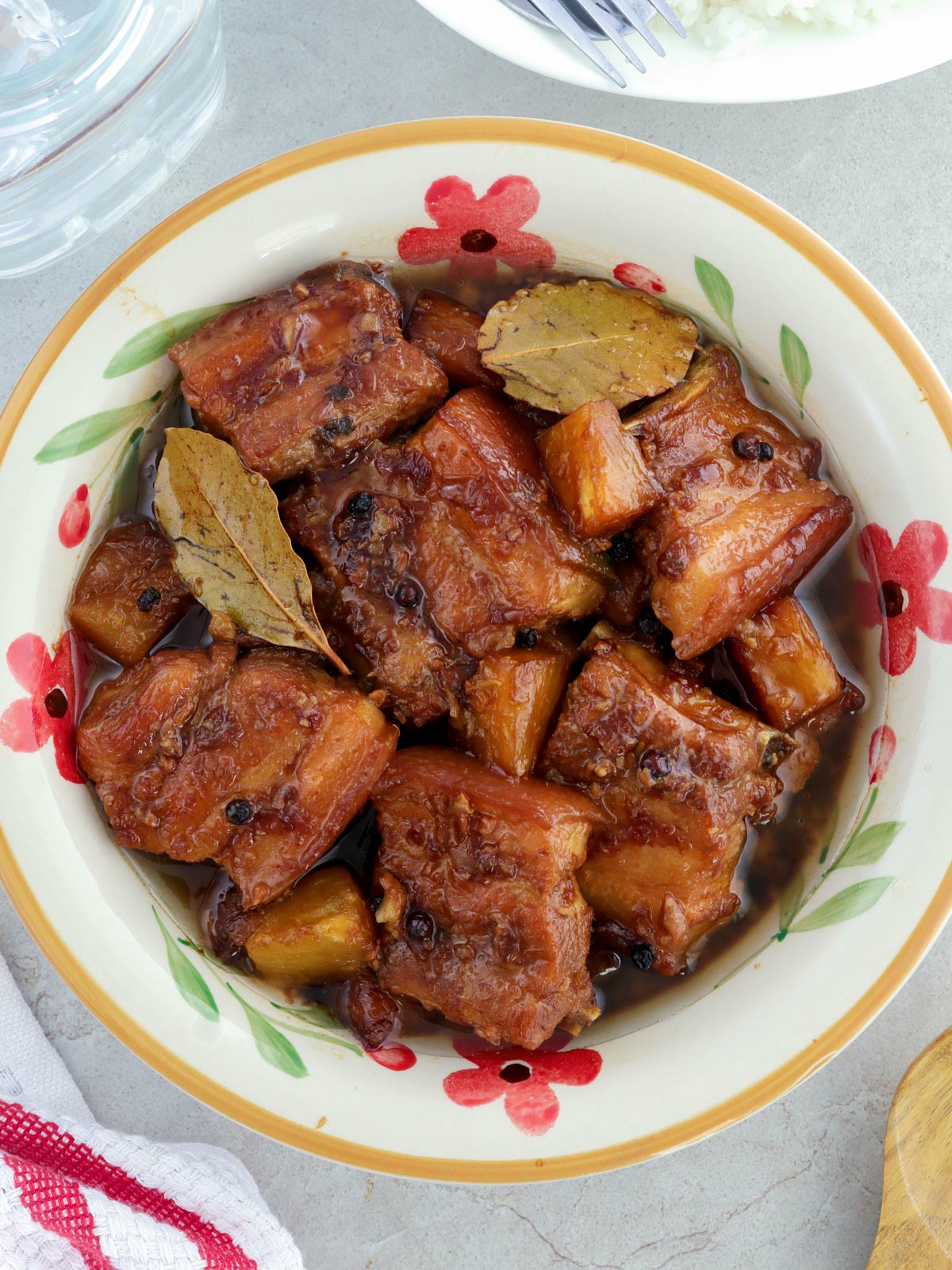
I cooked so many pork dishes these past weeks for our holiday series that I was literally knee-deep in all kinds of pig parts for days! My kitchen was quite a sight with a pig head roasting in the oven, pork ears and snout charring beautifully on an indoor grill, and pork belly simmering on the stovetop.
Although I enjoyed these dishes immensely, with an extra 5 pounds of weight to prove it, I have to say this pork hamonado was the clear winner of the lot. The combination of melt-in-your-mouth tender pork and a sweet and savory sauce over piping-hot steamed rice was pure heaven; I ate way more than I should have.
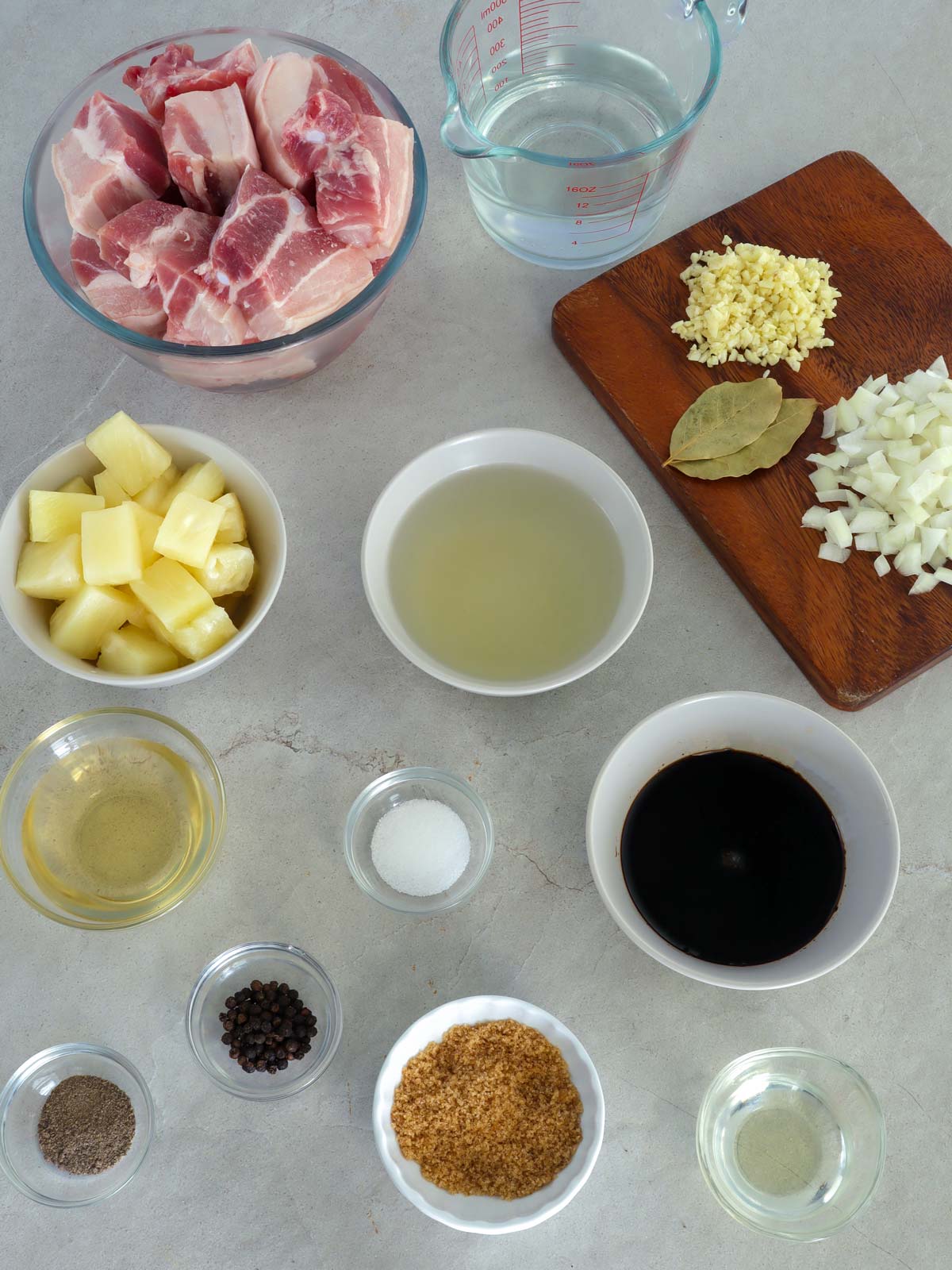
Ingredient notes
You can use any pork cut in hamonado, but for a richer flavor and velvety soft texture, I suggest parts with a thick cap of skin and fat such as hocks, belly, or shoulder.
The pork is braised in a mixture of pineapple juice and soy sauce, along with aromatics, garlic, onion, peppercorns, and bay leaves. When the meat is tender, brown sugar is stirred to add a touch of sweetness, and pineapple chunks are added to round off the dish.
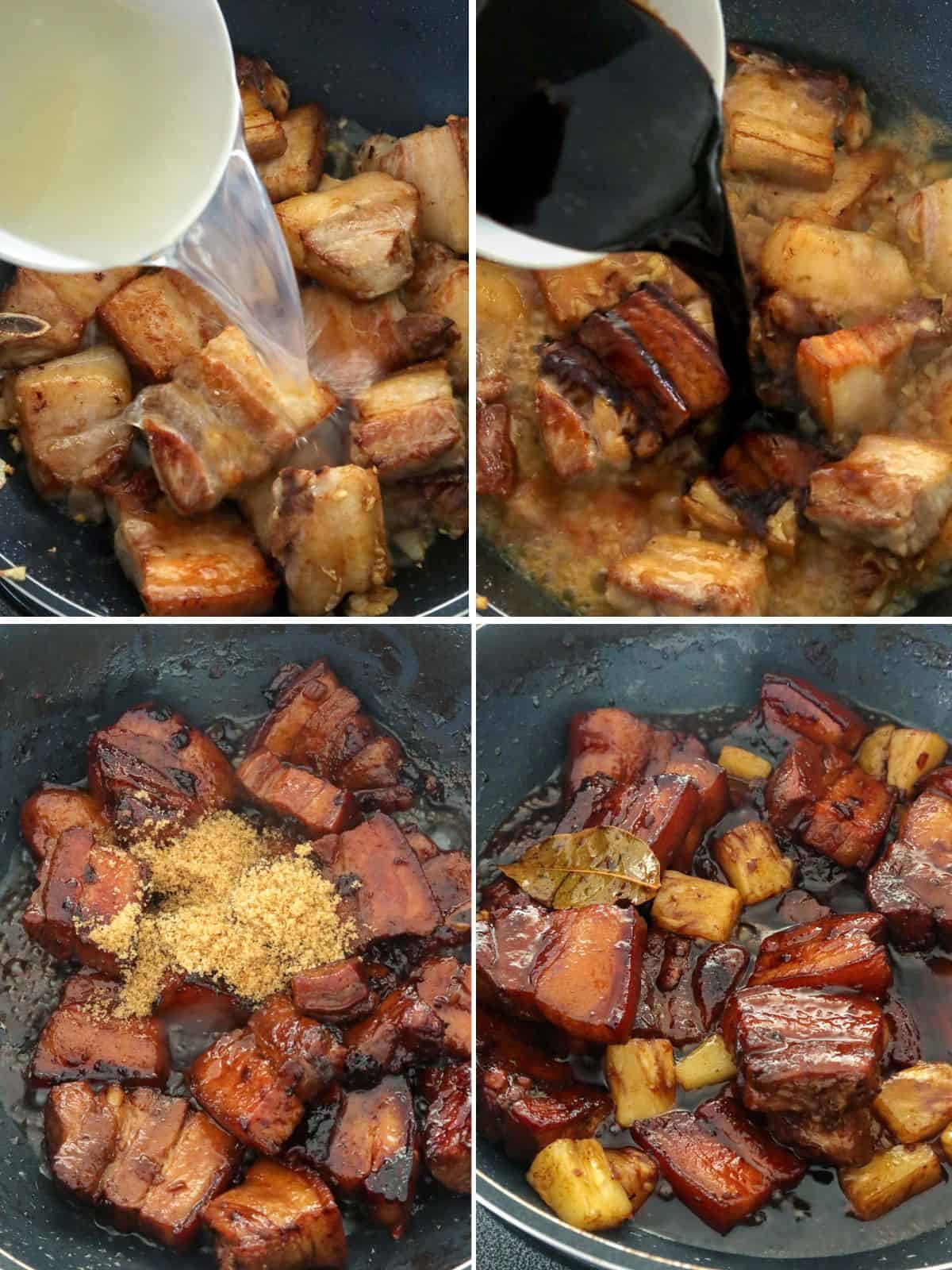
Cooking tips
- Brown the pork. It may entail extra work, but I promise it's worth the effort. Searing over high heat caramelizes the meat's surface, enriching the dish with more complex flavors.
- Don't rush! Cooking low and slow allows the fat to melt and the tough, connective tissues to soften to melt-in-your-mouth tenderness.
- Choose the right pineapple chunks. The liquid in the can is what you'll use to braise the meat, so make sure the pineapples are packed in juice and not heavy syrup, which is usually lacking in the sour notes that will help balance the salty soy sauce.
- Add apple cider vinegar. I use about ¼ cup to boost the tanginess of the pineapple juice. Once added in, allow it to boil uncovered and without stirring to mellow out the acid taste.
- Use brown sugar and not white. It has a slightly less concentrated sweetness and contains molasses, enhancing the hamonado sauce's rich flavor.
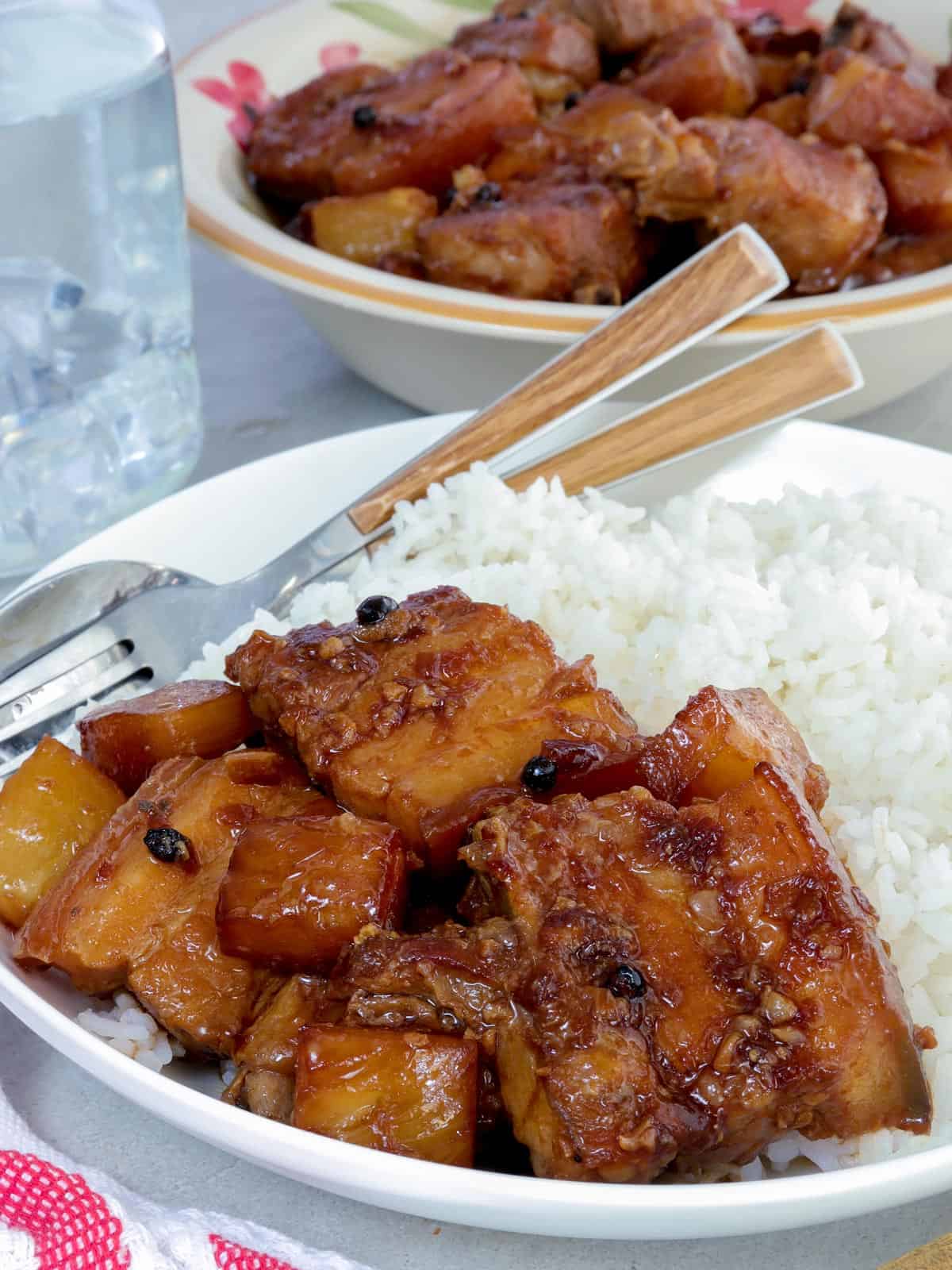
How to serve and store
- Pork hamonado makes a hearty and tasty main dish for lunch or dinner. Enjoy the sweet and savory sauce and melt-in-your-mouth tender pork with piping hot steamed rice!
- Store leftovers in a container with a tight-fitting lid and refrigerate for up to 3 days or freeze for up to 2 months.
- Reheat in a saucepan over medium heat or microwave at 2 to 3-minute intervals to 165 F.
Love the taste of pineapples in savory dishes? I have more recipes for you to try!
Meat Dishes with Pineapple
As our recipe series comes to a close, I want to thank you for making Kawaling Pinoy your hub for everything delicious this holiday season. I wish you the merriest Christmas and the happiest New Year. May your home be filled with joy and love.
More pork recipes
Ingredients
- 2 tablespoons canola oil
- 2 pounds pork belly (boneless or bone-in), cut into 2-inch cubes
- 1 onion, peeled and chopped
- 4 cloves garlic, peeled and minced
- 1 cup pineapple juice (reserved from can of pineapples)
- ¼ cup apple cider vinegar
- ½ cup soy sauce
- 1 cup water
- 1 teaspoon peppercorns
- 2 bay leaves
- 2 tablespoons brown sugar
- salt and pepper to taste
- 1 cup pineapple chunks
Instructions
- In a wide, heavy-bottomed pan over medium-high heat, heat oil until very hot but not smoking.
- Add pork belly in a single layer and cook for about 2 to 3 minutes or until lightly browned. Turn and cook for another 1 to 2 minutes or until all sides are lightly browned. Do NOT overcrowd the pan, cook in batches as needed.
- Remove meat from the pan and drain on paper towels. Keep warm.
- In the pan, add onions and garlic and cook, stirring regularly, until softened.
- Add pork back to the pan and stir to combine.
- Add pineapple juice and vinegar. Bring to a boil, uncovered and without stirring, for about 2 to 4 minutes.
- Add soy sauce, water, peppercorns, and bay leaves. Stir to distribute and bring to a boil, skimming scum that floats on top.
- Lower heat, cover, and simmer for about 50 to 60 minutes or until very tender and liquid is reduced.
- Add brown sugar and stir to combine. Season with salt and pepper to taste. Continue to simmer until sauce is thickened.
- Add pineapple chunks and cook for about 1 to 2 minutes or until heated through. Serve hot.
Notes
- As the liquid in the can is used to braise the meat, choose pineapple chunks packed in juice and not heavy syrup which will make the sauce overly sweet.
- When the apple cider vinegar is added in, allow it to boil uncovered and without stirring to mellow out the acid taste.
Video

Nutrition Information
“This website provides approximate nutrition information for convenience and as a courtesy only. Nutrition data is gathered primarily from the USDA Food Composition Database, whenever available, or otherwise other online calculators.”

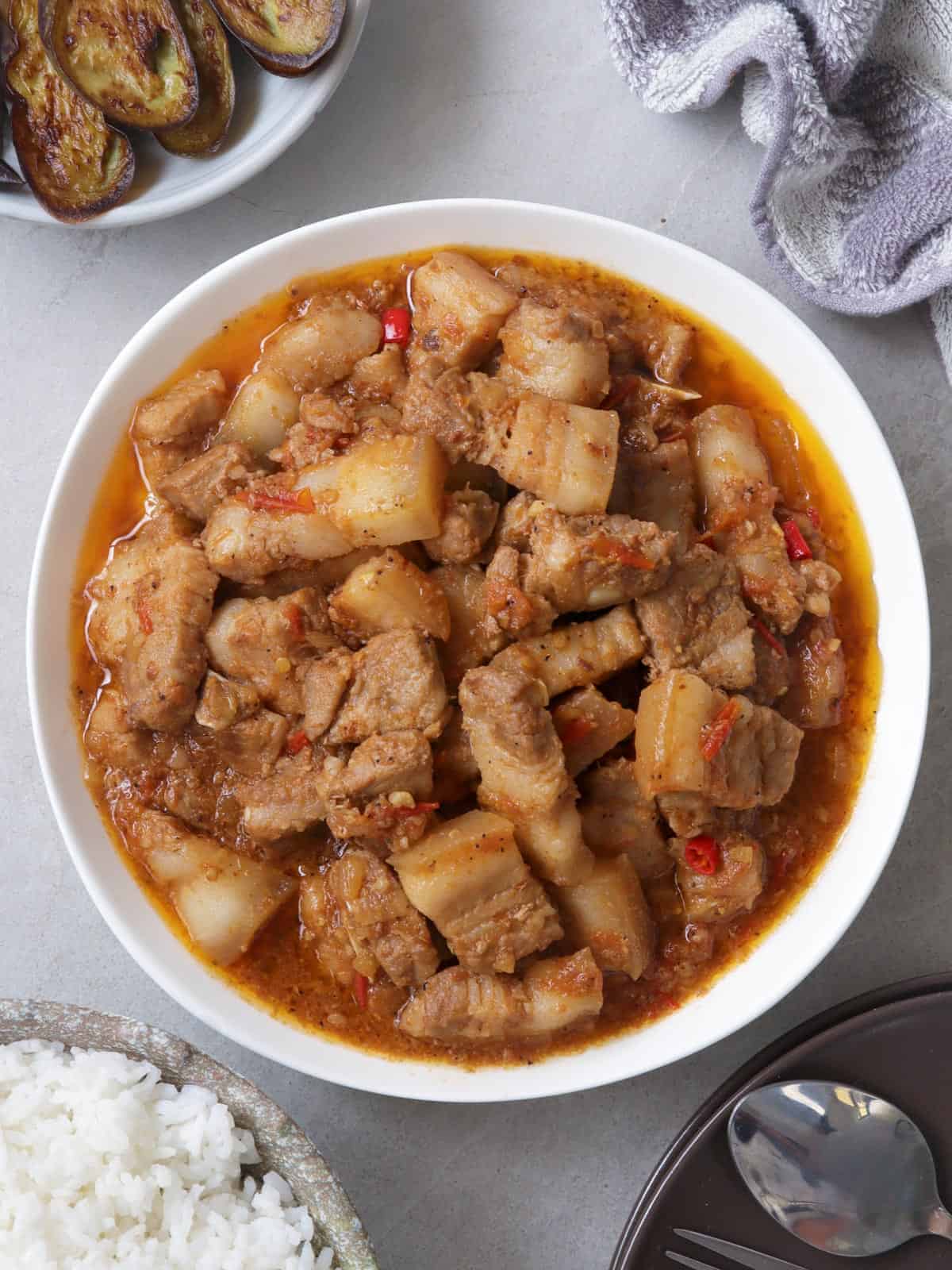
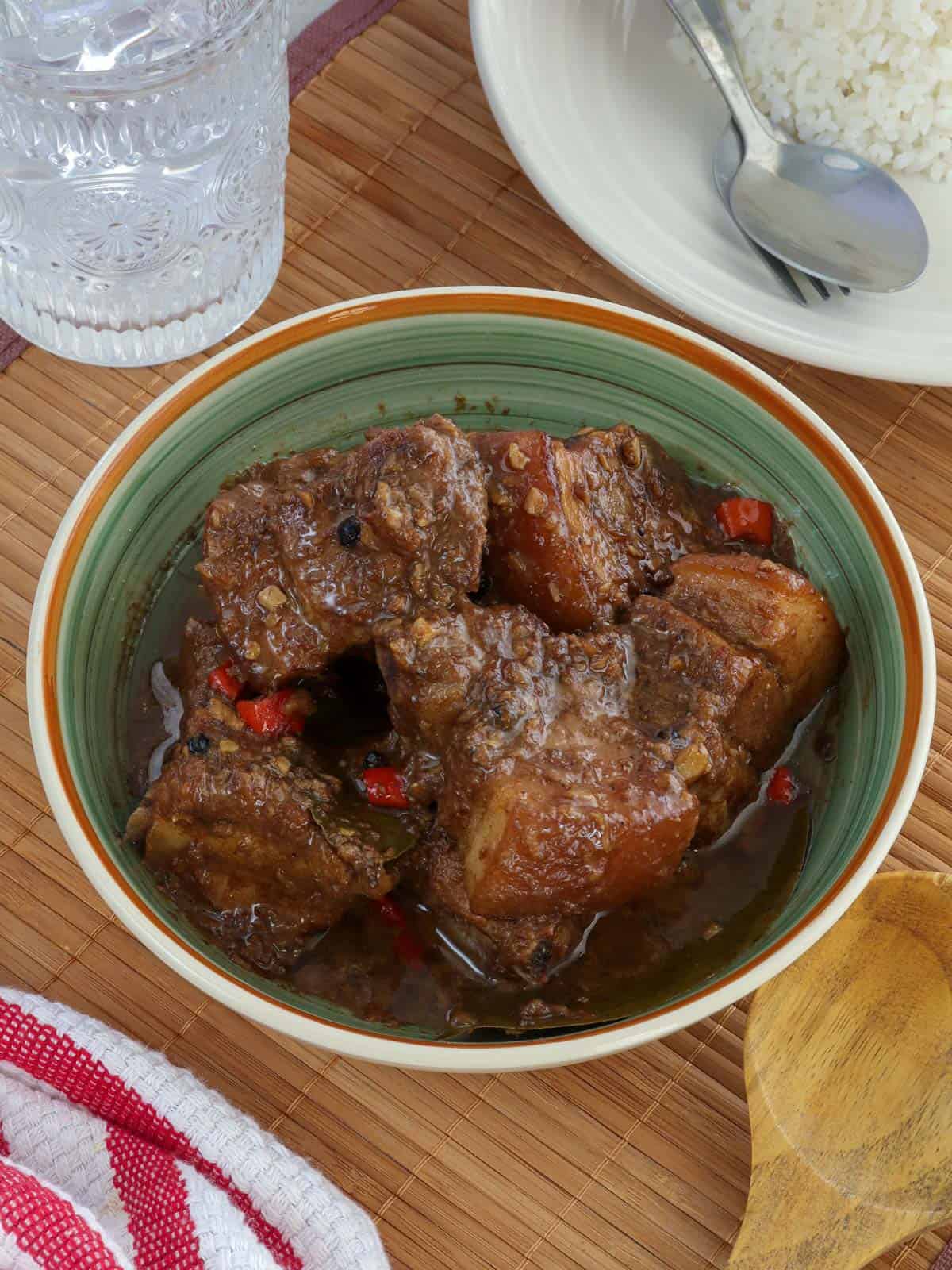
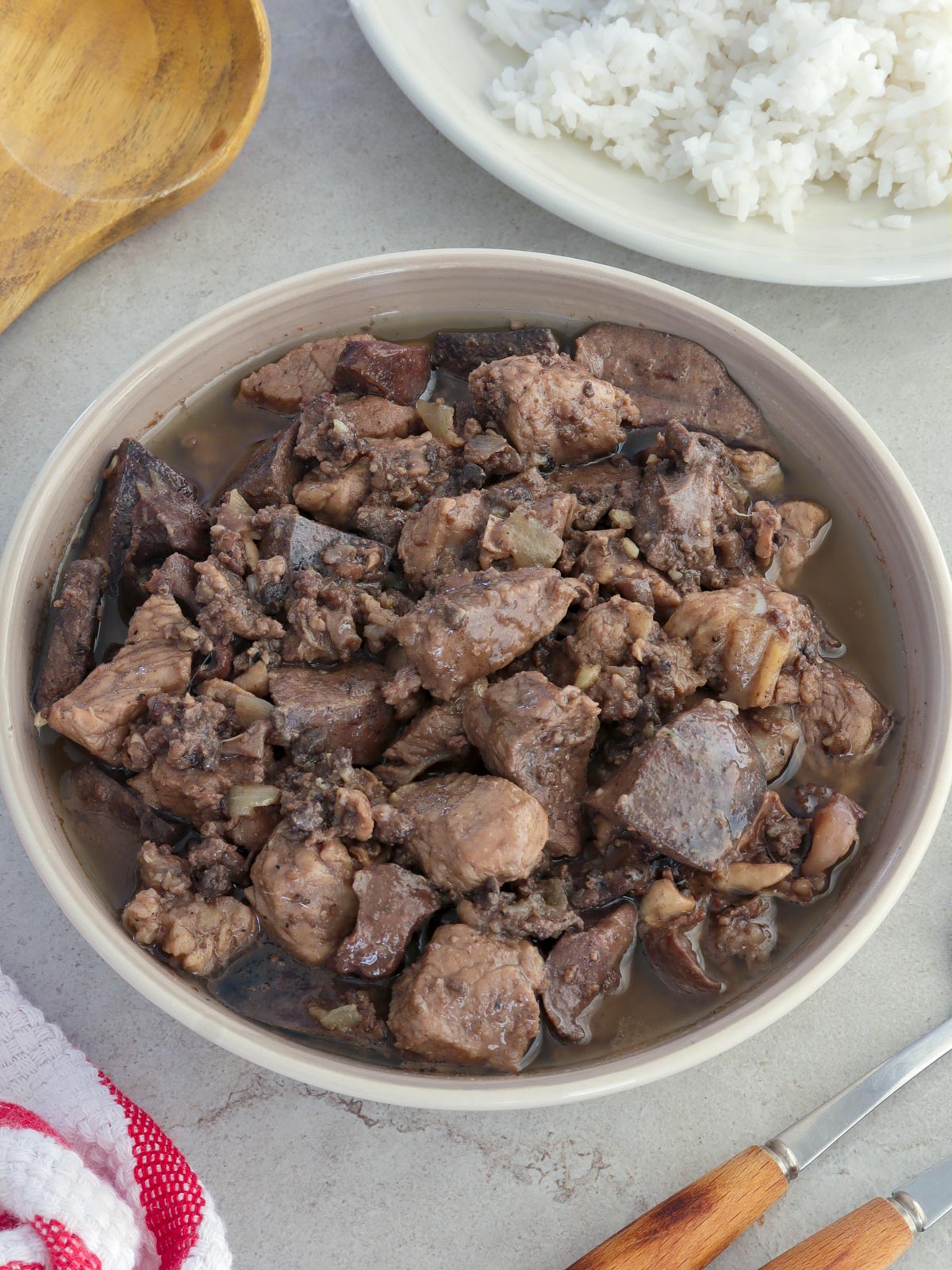
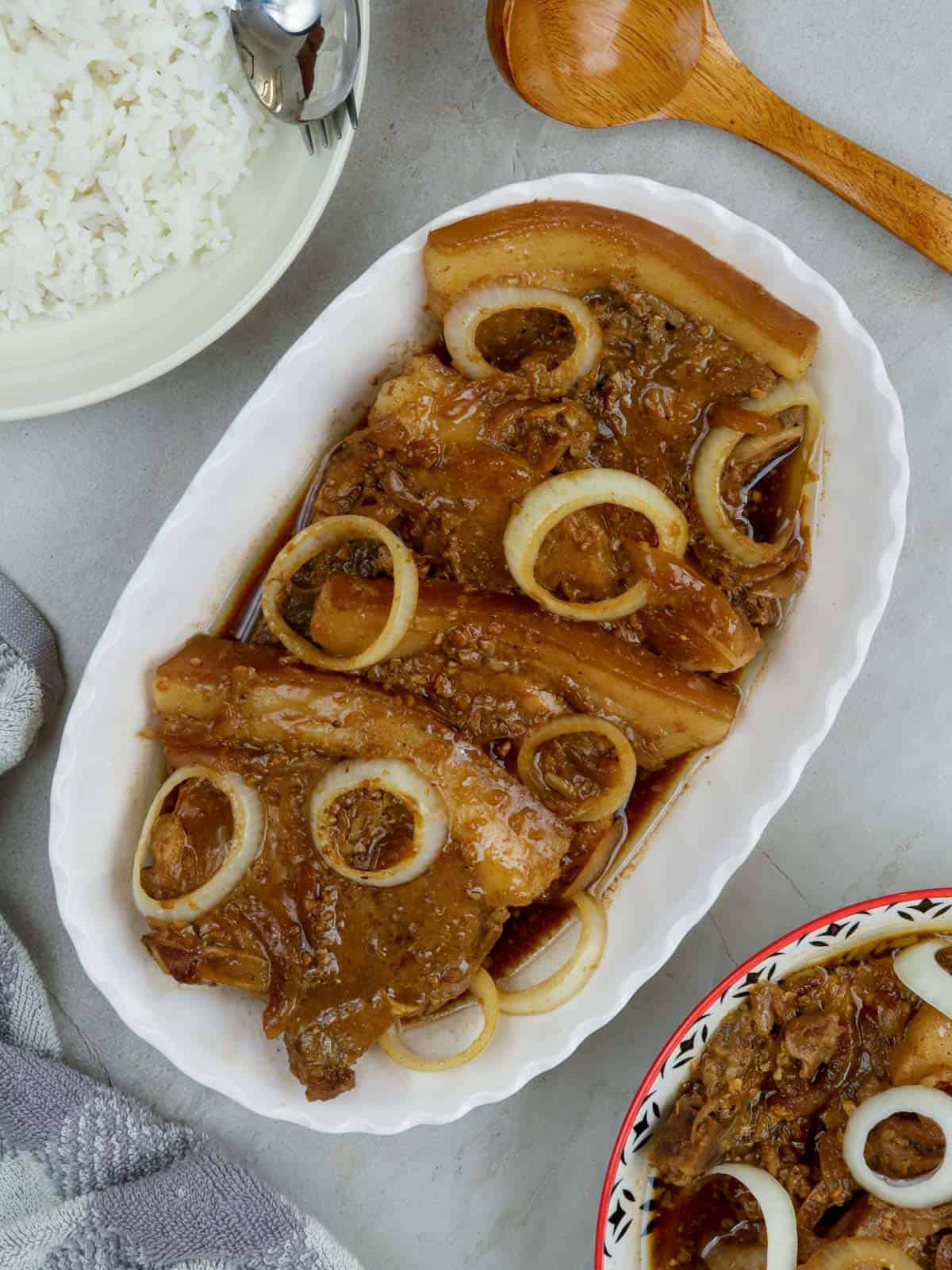
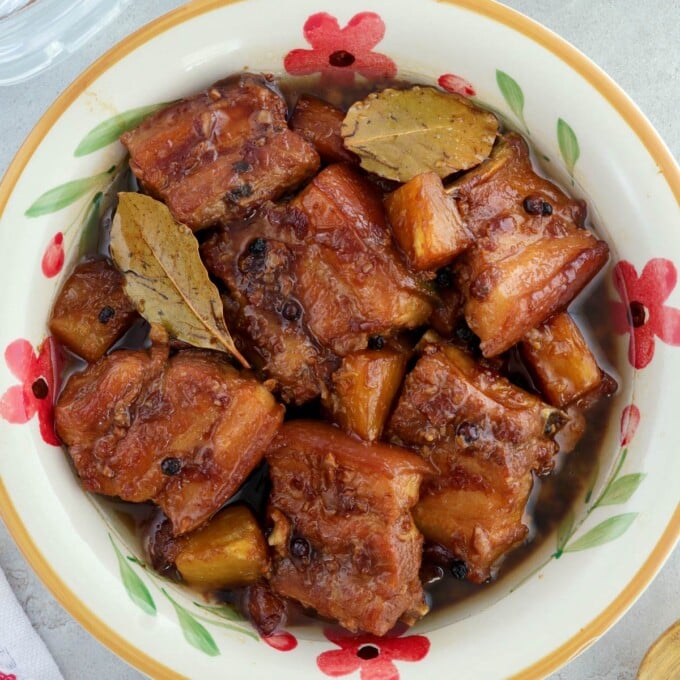


Christine Maguire says
Family loves this dish. We sometimes add veg too, green beans or broccoli, or both.
Merv Chang says
Love your recipes. Brings back all the foods I had growing up
Cess says
I have cooked this recipe tonight and my picky husband said that he really likes it. Thank you so much.
Febe Wass says
Hi Lalaine,
I enjoy the way you write your introductions as much as your recipes. Sometimes, the introductions are very funny and I like the way you format your site. The notes and extra information in each recipe is very helpful. Excellent photography too. The recipes are very well written and easy to follow. Your site is bookmarked in my laptop and is my go-to-site every time I am pining for Filipino food.
I will try this recipe today and I am sure the family will enjoy it. Keep up the good work and my best wishes to you and your family.
Lalaine Manalo says
Thank you so much for your feedback. I'm glad you find the recipes useful.
Marilyn says
Hi,
Is it possible to freeze this prepared dish? Thanks
Terry Hernandez says
Thank you mam Lalaine for sharing your delicious recipe, hope you wouldn't stop posting what you've known so i can follow you always and mommy's out there who are longing to acquire additional know how as far as cooking is concerned. Salamat po.